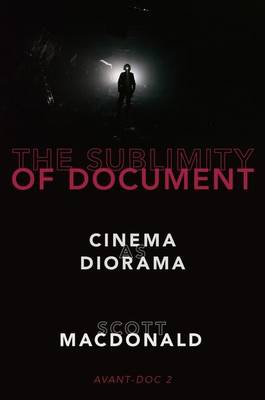
- Retrait gratuit dans votre magasin Club
- 7.000.000 titres dans notre catalogue
- Payer en toute sécurité
- Toujours un magasin près de chez vous
- Retrait gratuit dans votre magasin Club
- 7.000.000 titres dans notre catalogue
- Payer en toute sécurité
- Toujours un magasin près de chez vous
44,95 €
+ 89 points
Format
Description
The Sublimity of Document: Cinema as Diorama is a collection of in-depth, substantive interviews with moving-image artists working "avant-doc, that is, making films that explore the territory between documentary and experimental cinema. The book uses the early history of the museum habitat diorama of animal life, specifically the Hall of African Mammals at the American Museum of Natural History, as a way of rethinking both early and modern cinema document--and especially those recent filmmakers and films that are devoted to providing viewers with panoramic documentations of places and events that otherwise they might never have opportunities to experience in person. This international collection of 27 interviews follows on MacDonald's earlier Avant-Doc: Intersections of Documentary and Avant-Garde Cinema (Oxford, 2015). The interviews, organized panoramically within the collection, are dense with information and insight, and readable by specialists and non-specialists alike. In most instances, these are the most in-depth and expansive-sometimes the first-interviews with these filmmakers. Together, these interviews offer an engaging panorama of the recent history and geography of cinema devoted to documenting the world around us, as well as an in-depth look at the challenges and accomplishments of filmmakers willing to go anywhere on the planet (or on the internet!) to document what they believe we need to see. MacDonald's general introduction provides an overall context for the collection, which includes interviews with Ron Fricke, Gustav Deutsch, Laura Poitras, Fred Wiseman, Nikolaus Geyrhalter, Bill Morrison, Brett Story, Abbas Kiarostami, Lois Patiño, Dominic Gagnon, Erin Espelie, Yance Ford, Janet Biggs, Carlos Adriano, Craig Johnson, Ben Russell, Betzy Bromberg, James Benning, Maxim Pozdorovkin, along with several veterans of Harvard's Sensory Ethnography Lab (and with the executive directors of the distributor, Documentary Educational Resources, which has served the field of independent documentary for nearly fifty years)--each interview is introduced with MacDonald's overview of the interviewee's life and work. The book includes filmographies and selected bibliographies for all the filmmakers.
Spécifications
Parties prenantes
- Auteur(s) :
- Editeur:
Contenu
- Nombre de pages :
- 560
- Langue:
- Anglais
Caractéristiques
- EAN:
- 9780190052133
- Date de parution :
- 01-08-19
- Format:
- Livre broché
- Format numérique:
- Trade paperback (VS)
- Dimensions :
- 155 mm x 231 mm
- Poids :
- 952 g







